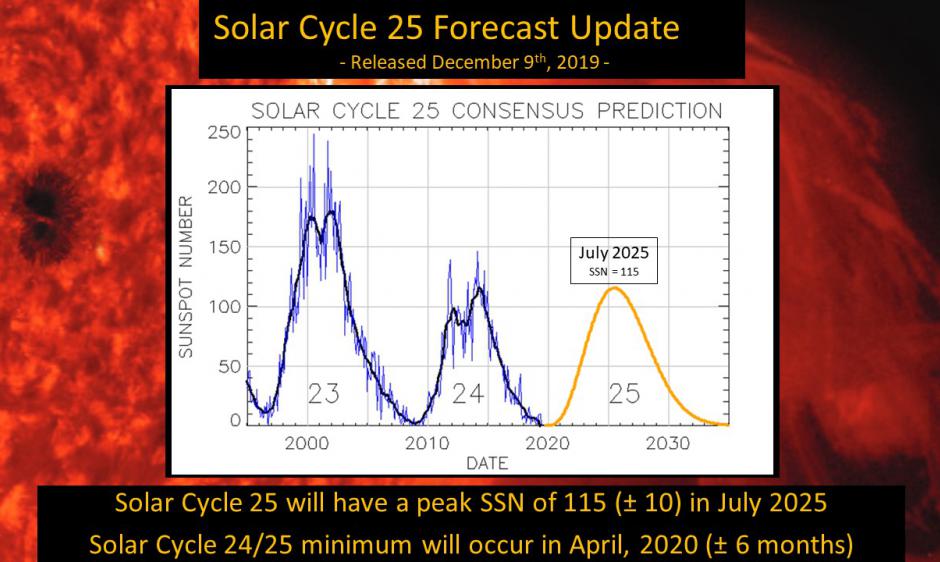It has been just over one year since I posted my last solar blog. As an individual who enjoys observing and imaging our Sun, going through the period known as solar minimum was not enjoyable. The Sun was virtually void of sunspots, prominences, filaments, and plages for a very long time. To review, a solar cycle is approximately an 11-year period that is measured by the number of sunspots visible on its surface. During this time the Sun becomes evermore magnetically active creating all kinds of very interesting visible features when observed using various type of solar filters. At its peak the cycle is known as solar maximum. During the cycle there is a reverse in the magnetic fields and the activity diminishes to what is known as solar minimum. And the cycles repeat themselves at varying levels of activity.
The chart below (courtesy of Hathaway NASA/ARC) shows that Solar Cycle 24 was relatively calm as compared to the two cycles preceding it.
Spotless Days
Current Stretch: 0 days (as of 3/27/2021)
2021 total: 32 days (37%)
2020 total: 208 days (57%)
2019 total: 281 days (77%)
2018 total: 221 days (61%)
2017 total: 104 days (28%)
2016 total: 32 days (9%)
2015 total: 0 days (0%)
December 2019 marked the official beginning of Solar Cycle 25. As an observer, you really could not tell that much had changed from solar minimum at the end of Solar Cycle 24. But as 2020 marched on, there were moments of excitement where sunspot groups as well as other features appeared.
November 8, 2020





























